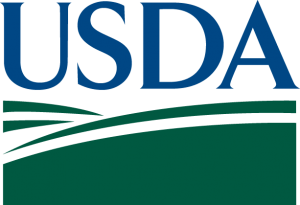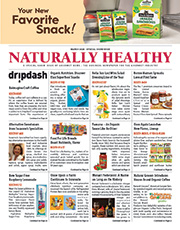USDA Invites Producers, Stakeholders to Urban Agriculture Meeting
 The U.S. Department of Agriculture encourages urban producers, innovative producers and other stakeholders to virtually attend the fourth public meeting of the Federal Advisory Committee for Urban Agriculture and Innovative Production on Feb. 23.
The U.S. Department of Agriculture encourages urban producers, innovative producers and other stakeholders to virtually attend the fourth public meeting of the Federal Advisory Committee for Urban Agriculture and Innovative Production on Feb. 23.
“Since last year, the Federal Advisory Committee has been a source of valuable, on the ground information and recommendations for USDA,” said Terry Cosby, chief of USDA’s Natural Resources Conservation Service, which houses USDA’s Office of Urban Agriculture and Innovative Production. “This meeting will help us better serve urban and innovative producers and their communities.”
The Committee is part of USDA’s efforts to support urban agriculture and innovative agriculture, creating a network for feedback. Members include agricultural producers and representatives from the areas of higher education or extension programs, non-profits, business and economic development, supply chains and financing. Three public meetings of the Committee were held in 2022.
Topics include:
- Addressing previous public comments.
- Subcommittee and committee deliberations.
- Public forum.
The meeting will be held from 3:30-6 p.m. ET on Feb. 23. To attend virtually, register by Feb. 23 on the Committee’s webpage.
Written comments for the urban agriculture meeting must be submitted by 11:59 p.m. ET on March 9 through the Federal eRulemaking Portal. Docket #2022-24020.
For special accommodations, contact Markus Holliday at UrbanAgricultureFederalAdvisoryCommittee@usda.gov. \
USDA will share the agenda between 24 to 48 hours prior to the meeting on https://www.usda.gov/partnerships/federal-advisory-committee-urban-ag. Additionally, other resources include the Federal Register notice and the Committee’s webpage.
For news of interest to the specialty food industry, subscribe to Gourmet News.
USDA Adds Support for Farmers, Ranchers, Producers
 At the Jan. 9 American Farm Bureau Federation annual convention, Agriculture Secretary Tom Vilsack announced several major developments at the U.S. Department of Agriculture that will benefit farmers, ranchers and producers across the nation.
At the Jan. 9 American Farm Bureau Federation annual convention, Agriculture Secretary Tom Vilsack announced several major developments at the U.S. Department of Agriculture that will benefit farmers, ranchers and producers across the nation.
“At USDA, our goal is to provide all farmers, including new and underserved producers, with the opportunity to receive the assistance they need to continue farming, to build and maintain their competitive-edge, and to access more, new, and better markets,” said Vilsack, who spoke at the American Farm Bureau Federation annual convention. “Working together we can ensure American agriculture is as resilient as ever and will do so by implementing a holistic approach to emergency assistance, by lowering input costs through investments in domestic fertilizer production, and by promoting competition in agricultural markets.”
Vilsack announced that USDA continues to make progress in the following areas by:
- Assisting producers facing high input costs to access domestic, innovative fertilizer capacity.
- Improving risk protection for underserved producers.
- Investing in new choices and meat processing capacity for livestock producers.
- Providing relief for producers impacted by disaster and the pandemic.
These programs and efforts are part of the Biden-Harris Administration’s commitment to lower costs for producers, increase competition and access to market opportunities, and ensure equity in designing and developing programs to help all producers. Additionally, the announcements are a continuation of the Biden-Harris Administration’s focus on targeting assistance based on need, reaching everyone who is eligible, and removing the bureaucratic burden on producers.
USDA will soon begin accepting public comments on environmental and related aspects of 21 potentially viable projects to increase fertilizer production across the United States totaling up to $88 million. These applicants have requested grant funding through the first round of the Department’s newly established Fertilizer Production Expansion Program. This program is one of many ways the Biden-Harris Administration invests in the agricultural supply chain right here at home. Investing in projects to increase fertilizer production will bring production and jobs back to the United States, promote competition and support American goods and services. Under the leadership of President Biden and Vice President Harris, USDA continues to create a competitive, resilient, secure and sustainable economy to support opportunities for local businesses and people across this nation. The Fertilizer Production Expansion Program is a critical part of that effort.
The Department is considering fertilizer production projects in Alabama, Arizona, Colorado, Florida, Iowa, Louisiana, Massachusetts, Minnesota, Missouri, Montana, Ohio, Oregon, Texas, Washington, and Wisconsin. Additional information is available at www.rd.usda.gov/fpep-environmental-review-comments.
The Fertilizer Production Expansion Program is part of a whole-of-government effort to promote competition in agricultural markets. USDA has also released a summary of the comments (PDF, 953 KB) received through a Request For Information on Access to Fertilizer: Competition and Supply Chain Concerns, which highlights the variety of concerns about the limited competition and dependence of foreign sources for significant amounts of fertilizer.
The Noninsured Crop Disaster Assistance Program provides financial assistance to producers of non-insurable crops when low yields, loss of inventory or prevented planting occur due to natural disasters. There is a Congressionally mandated fee waiver for basic coverage for underserved producers. However, a previous set of procedures and regulations created a paperwork burden that stood in the way of many producers taking advantage of the basic coverage option. The recent rule removes barriers and establishes procedures through which an underserved producer with a CCC-860, Socially Disadvantaged, Limited Resource, Beginning and Veteran Farmer or Rancher Certification, on file prior to the applicable NAP application closing date will automatically receive basic coverage for any NAP-eligible crops they plant. Underserved producers on file for 2022 will also receive retroactive basic coverage. Like all other covered producers, underserved producers will still need to file a notice of loss and apply for benefits.
In addition to the basic catastrophic level coverage under NAP, producers can buy-up higher levels of coverage by paying a premium. Underserved producers receive a 50 percent discount on any premiums. Producers who are interested in obtaining NAP coverage for 2023 should also contact their local FSA county office for information on eligibility, coverage options and applying for coverage. FSA also plans to target outreach to previous producers of NAP-eligible crops to ensure these producers are aware of their options. For more information, reference our NAP fact sheet (PDF, 622 KB).
USDA is investing more than $12 million to expand independent meat and poultry processing capacity in Ohio, Michigan and Minnesota. Vilsack announced that Meat and Poultry Processing Expansion Program grants will help fund the following projects:
- In Ohio, International Food Solutions Inc. is receiving $9,575,250 to help redevelop and expand a vacant building in Cleveland into a plant with the capacity to process 60 million pounds of poultry. The expansion will include cold and dry storage and two processing lines. The project will create 227 good-paying jobs. International Food Solutions is a woman- and minority-owned business that has produced thousands of prepared meals for K-12 students receiving free and reduced-price school meals.
- In Michigan, grower-owned cooperative Michigan Turkey Producers is receiving $1,531,204 to help upgrade the hot water system, wastewater treatment facilities and refrigerated trailers to accommodate an expansion at its plant in Grand Rapids. With recent automation upgrades and the continuing expansion made possible by the grant, the plant will be able to add a shift and double its processing capacity to 10 million turkeys annually. The additional capacity also will allow the plant to provide back-up for other facilities of similar size in neighboring states.
- In Minnesota, Benson + Turner Foods Inc. is receiving $962,954 to build a 6,788-square-foot cattle and hog processing plant on the White Earth Indian Reservation and storefront near Waubun. The grant will help the company achieve its goal of building a sustainable business that benefits the local economy by using locally grown livestock and providing new opportunities for producers to market their products by providing USDA-certified processing for them.
This is in addition to recent announcements of $74 million in 22 MPPEP projects, $75 million in grants through the Meat and Poultry Intermediary Lending Program, $3.9 million in Value Added Producer Grants, and $5.7 million in Food Supply Chain Loan Guarantees, all supporting meat and poultry processing. These programs are a few of the suite of programs facilitating investment in meat and poultry processing.
USDA is announcing two new programs that wrap-up and fill remaining gaps in previous natural disaster and pandemic assistance. To be eligible for ERP Phase Two, producers must have suffered a decrease in allowable gross revenue in 2020 or 2021 due to necessary expenses related to losses of eligible crops from a qualifying natural disaster event. Assistance will be primarily to producers of crops that were not covered by Federal Crop Insurance or NAP, since crops covered by Federal Crop Insurance and NAP were included in the assistance under ERP Phase One.
To be eligible for PARP, an agricultural producer must have been in the business of farming during at least part of the 2020 calendar year and had a 15% or greater decrease in allowable gross revenue for the 2020 calendar year, as compared to a baseline year.
The ERP Phase 2 and PARP application period is open from Jan. 23 through June 2. For more information, producers should contact their local USDA service center or reference the ERP Phase 2 fact sheet (PDF, 1.7 MB), PARP fact sheet (PDF, 540 KB) or the ERP Phase Two-PARP Comparison fact sheet (PDF, 2.5 MB).
For news of interest to the food and beverage industry, subscribe to Gourmet News.
USDA, Oregon Sign Meat Inspection Agreement
 The U.S. Department of Agriculture’s Food Safety and Inspection Service and the state of Oregon have finalized a cooperative agreement, under which the state inspection program may inspect meat products produced for shipment within the state.
The U.S. Department of Agriculture’s Food Safety and Inspection Service and the state of Oregon have finalized a cooperative agreement, under which the state inspection program may inspect meat products produced for shipment within the state.
The state inspection program must develop, administer, and enforce requirements “at least equal to” those imposed under the Federal Meat Inspection Act.
“Today’s announcement with Oregon will help strengthen our nation’s food system and help prevent supply chain bottlenecks,” said USDA’s Deputy Under Secretary Sandra Eskin. “This program is especially helpful to small meat and poultry processors in building their local and state marketplaces.”
With the addition of Oregon, 28 states have state inspection programs. In states with inspection programs, establishments have the option to apply for federal or state inspection, but product produced under state inspection is limited to intrastate commerce. FSIS provides up to 50 percent of the state’s operating funds, as well as training and other assistance.
States are key FSIS partners and formal working relationships are reflected in cooperative agreements between FSIS and affected state agencies. State Meat and Poultry Inspection programs are an integral part of the nation’s food safety system with about 1,900 small and very small meat and poultry establishments inspected under state MPI programs.
FSIS provides guidance to state MPI programs under these agreements, reviews each state MPI program and its requirements and activities at least annually, and provides approximately $60 million dollars annually to support the state MPI programs currently operating.
In addition to Oregon, FSIS has signed state inspection agreements with Alabama, Arizona, Delaware, Georgia, Indiana, Illinois, Iowa, Kansas, Louisiana, Maine, Minnesota, Mississippi, Missouri, Montana, North Carolina, North Dakota, Ohio, Oklahoma, South Carolina, South Dakota, Texas, Utah, Vermont, Virginia, West Virginia, Wisconsin, and Wyoming.
For updates on issues related to the specialty food industry, subscribe to Gourmet News.






